Oct. 8, 2016 show
Notorious murders in 1868 near White River
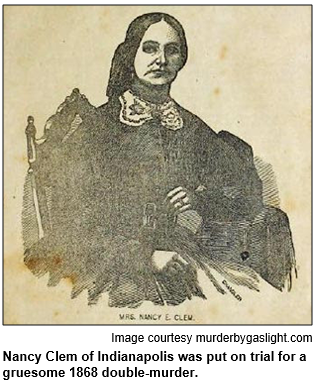 A gruesome scene was discovered on the banks of the White River just northwest of Indianapolis in September 1868: the mutilated bodies of a married couple. A gruesome scene was discovered on the banks of the White River just northwest of Indianapolis in September 1868: the mutilated bodies of a married couple.
The unlikely suspect in the murders was Nancy Clem, an Indianapolis housewife and businesswoman who has been described as "the supposed originator of the Ponzi scheme." The sensational crimes, which put Indianapolis in the national spotlight, are the focus of a new book, The Notorious Mrs. Clem: Murder and Money in the Gilded Age (Johns Hopkins University Press), by Wendy Gamber, an Indiana University history professor.
Wendy will be Nelson's guest to explore the social history involved with the crimes and Mrs. Clem's subsequent trials. Her prosecutors included none other than Benjamin Harrison, who in 1888 became the only U.S. president elected from Indiana.
The murders of Jacob and Nancy Young (he was killed with a shotgun, she with a pistol) drew national attention for several reasons, including the unusual suspect in the double homicide (a woman) and the rare method involved. According to Wendy Gamber, only 5 percent of women murderers in the 19th century used firearms.
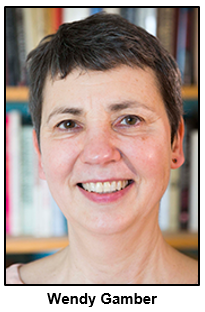 The shocking episode - with business dealings as the alleged motive - also is illuminating about, as Wendy puts it, "women's active participation in 19th-century economics." She describes Mrs. Clem as, "by turns, a farm girl, respectable urban housewife, boardinghouse keeper, street broker, supposed originator of the Ponzi scheme, peddler of patent medicines and 'female physician'." The shocking episode - with business dealings as the alleged motive - also is illuminating about, as Wendy puts it, "women's active participation in 19th-century economics." She describes Mrs. Clem as, "by turns, a farm girl, respectable urban housewife, boardinghouse keeper, street broker, supposed originator of the Ponzi scheme, peddler of patent medicines and 'female physician'."
At one point, Mrs. Clem presented herself as a physician and sold various tonics.
According to The Notorious Mrs. Clem, her father was one of the earliest white settlers of Pike Township in Marion County. At the time of the murders in 1868, Mrs. Clem was in her mid-30s and had been married twice.
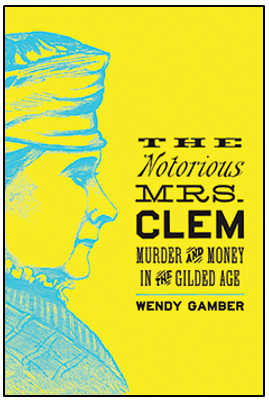 The murders were covered by one of Indiana's first woman journalists, Laura Ream, the Indianapolis-based correspondent for a Cincinnati-based newspaper. According to The Notorious Mrs. Clem, Benjamin Harrison's courtroom skills during the trials "did much to secure the future president's reputation as a brilliant attorney, a reputation that launched his political career." The murders were covered by one of Indiana's first woman journalists, Laura Ream, the Indianapolis-based correspondent for a Cincinnati-based newspaper. According to The Notorious Mrs. Clem, Benjamin Harrison's courtroom skills during the trials "did much to secure the future president's reputation as a brilliant attorney, a reputation that launched his political career."
Nancy Clem, once the nation's best-known accused murderess, eventually was "eclipsed by others with more lasting claims to fame," our guest Wendy Gamber writes, referring to Lizzie Borden of Massachusetts. Borden stood trial for the axe murders in 1892 of her father and stepmother.
Jacob Young, one of the victims of the White River murders, had business entanglements with Nancy Clem. The wife of an Indianapolis grocer, she teamed up with Young and another entrepreneur, William Abrams, in investment scams that have been compared to modern-era Ponzi schemes.
During the late 1860s, Indianapolis was enjoying a period of explosive growth, so many residents had discretionary money, making them prey for shady investors as well as loan sharks. According to The Notorious Mrs. Clem, investors in schemes devised by Clem, Abrams and Young included "some of the city's most prominent businessmen."
The footprints of a woman and a man were discovered near the bodies of the Youngs. Their mutilated, bullet-riddled bodies were found off the banks of the White River near what is today the intersection of Cold Spring and Lafayette roads.
A series of trials of Nancy Clem ensued.
Learn more:
Additional research courtesy Michael Armbruster.
Roadtrip: The bridges of Putnam County
 Guest Roadtripper and travel writer Jane Ammeson tells us: "While Parke County holds the honor of being the Covered Bridge Capital of the Midwest, Putnam, the county just east of Parke, also has its share of treasures." Guest Roadtripper and travel writer Jane Ammeson tells us: "While Parke County holds the honor of being the Covered Bridge Capital of the Midwest, Putnam, the county just east of Parke, also has its share of treasures."
Jane continues: "With nine covered bridges tucked along the winding country roads just outside of Greencastle, Putnam boasts the second-biggest collection of historic covered bridges in the state. You skip a lot of traffic in Putnam County, and even better, it has the only covered bridge named after a woman, and just one of a few said to be haunted."
The Edna Collins bridge spans the slow-moving waters of Walnut Creek, and the nearby woods are still and serene. But the stories about this covered bridge and others nearby are anything but tranquil, invoking tales of restless spirits who refuse to move on.
"Almost a century ago," says Jane, "the mailman stopped at the bridge's entrance each day and honked three times. It was a signal for the young girl who lived nearby to run across the bridge to get the mail. One day the mailman sounded his horn but no one appeared. She had, he would later learn, fallen into Walnut Creek and drowned."
Now, adventure seekers stop at the Edna Collins Bridge at midnight, honking three times. And it is said that the little girl runs towards them as if to get the mail; and that just as quickly as she appears, she disappears again into the dark night.
Well, if ghost stories don't thrill you this October, remember that a delightful little Clinton Falls is just southeast down the road from Edna Collins bridge. The gurgling rapids are especially pretty this time of year.
Says Jane: "Worth the Roadtrip."
History Mystery
The banks of the White River northwest of Indianapolis was the setting for a double murder in 1868, but a positive development is unfolding elsewhere along the river - on West 30th Street.
A Naval Armory built during the 1930s - and used to train U.S. Navy radio operators during World War II - will house a new high school next fall. 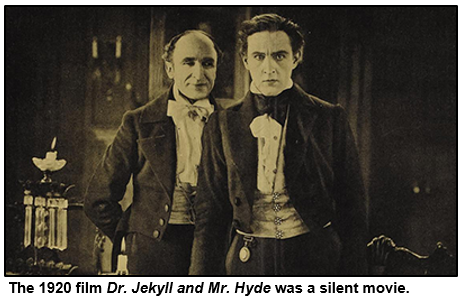 A former drill hall will be converted into a gymnasium along with other changes that will enable the opening of the public charter high school. It will be the second campus for Herron High School, which is at 16th and Pennsylvania streets. A former drill hall will be converted into a gymnasium along with other changes that will enable the opening of the public charter high school. It will be the second campus for Herron High School, which is at 16th and Pennsylvania streets.
The conversion of the landmark building on White River was the focus of Hoosier History Live show last month that also explored the re-use of a historic building in the Irvington neighborhood into a charter school.
Question: What will be the name of the new high school on the White River?
The call-in number is (317) 788-3314. Please do not call into the show until you hear Nelson pose the question on the air, and please do not try to win the prize if you have won any other prize on WICR during the last two months. You must be willing to give your name and address to our engineer and be willing to be placed on the air.
The prize is two tickets to Frightful: A Silent Halloween, a film screening of the 1920 silent version of Dr. Jekyll & Mr. Hyde at Indiana Landmarks Center on Oct. 28, courtesy of Indiana Landmarks. Organ accompaniment by Mark Herman, and expect an appearance by Sammy Terry.
Your Hoosier History Live team,
Nelson Price, host and creative director
Molly Head, producer, (317)
927-9101
Richard Sullivan, webmaster and tech director
Pam Fraizer, graphic designer
Garry Chilluffo, media+development director
www.hoosierhistorylive.org

 
 
 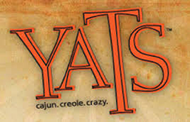
Please tell our sponsors that you appreciate their support: Indiana Authors Award | Indiana Historical Society | Lucas Oil | Mr. Tequila's Cantina & Grill | Shirley Brothers Mortuaries & Crematory | Story Inn| Yats Cajun Creole Restaurant
  Acknowledgments to Monomedia, Visit Indy, WICR-FM, Fraizer Designs, Heritage Photo & Research Services, Derrick Lowhorn and many other individuals and organizations. We are an independently produced program and are self-supporting through organizational sponsorships and individual contributions. We do not receive any government funding. Visit our website to learn how you can support us financially. Also, see our Twitter feed and our Facebook page for regular updates. Acknowledgments to Monomedia, Visit Indy, WICR-FM, Fraizer Designs, Heritage Photo & Research Services, Derrick Lowhorn and many other individuals and organizations. We are an independently produced program and are self-supporting through organizational sponsorships and individual contributions. We do not receive any government funding. Visit our website to learn how you can support us financially. Also, see our Twitter feed and our Facebook page for regular updates.
Oct.15, 2016 show
Live from Hoosier Homecoming
Thousands of Hoosiers are expected to celebrate the state's 200th birthday at the debut of the Bicentennial Plaza next to the Indiana State Capitol. And Hoosier History Live will be amid the hoopla at the Hoosier Homecoming for a live "remote" (on-location) broadcast as Nelson interviews an array of attendees.
During the festivities, the Bicentennial torch will arrive from its 92-county journey that began in early September in Corydon, the state's first capital.
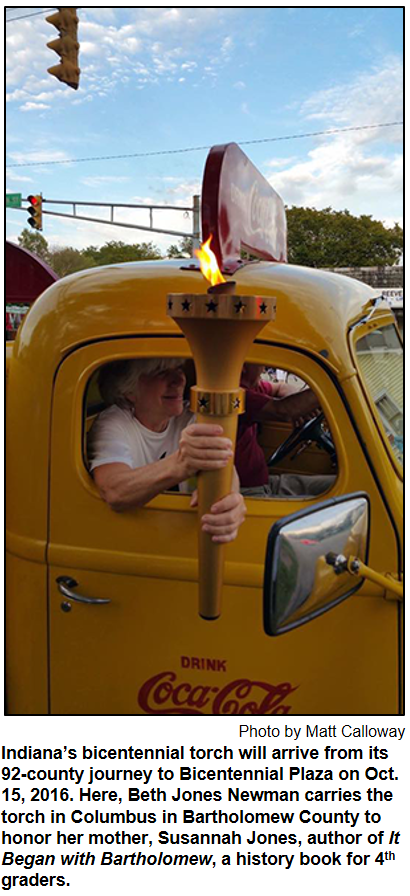 Historic re-enactors of famous Hoosiers, top state and civic leaders, artists, food vendors and residents from across Indiana are expected to attend the Hoosier Homecoming. So are many of the 2,000 people who have carried the torch during its 2,300-mile relay. Historic re-enactors of famous Hoosiers, top state and civic leaders, artists, food vendors and residents from across Indiana are expected to attend the Hoosier Homecoming. So are many of the 2,000 people who have carried the torch during its 2,300-mile relay.
Designed and constructed at a cost of about $2 million, the Bicentennial Plaza will be an outdoor public gathering space with artwork and a water element. Located just west of the Indiana Statehouse, the plaza is expected to serve as a legacy of the state's 200th anniversary. Indiana became the country's 19th state in 1816.
Nelson's lineup of guests will include distinguished historians such as Jim Madison of the Indiana Bicentennial Commission (and the author, most recently, of Hoosiers: A New History of Indiana), as well as Abraham Lincoln, who lived in the state from ages 7 through 21.
Well, slight clarification. "Honest Abe" (1809-1865), whose family moved to the Indiana wilderness just before statehood was achieved, won't be on the scene. But expect historic reenactor Danny Russel - in his stovepipe hat, boots and other Lincoln-like garb - to participate in the festivities and share insights with Nelson.
Other notables on our special show will include Perry Hammock, executive director of the Bicentennial Commission, who has been a frequent Hoosier History Live guest during the last 18 months. Perry and his crew are overseeing the Hoosier Homecoming.
During a guest appearance on our show in July, he noted the creation of the plaza initially was planned in 1916 during the state's 100th birthday celebrations; construction never occurred, though. So instead of being a Centennial Plaza as originally proposed, the public space will be a Bicentennial Plaza - and serve as a future setting, officials hope, for a range of outdoor events including rallies for sports teams, concerts and festivals. Construction of the plaza began last spring.
Inspired by the Olympic torch, the Bicentennial torch was designed by a team of more than 50 engineering students at Purdue University. The torch relay project has had a budget of $1.6 million.
Since the relay began in Corydon, the torch has been carried along U.S. 40 (the Old National Road) and to landmarks including the Indianapolis Motor Speedway, the Indiana Dunes, the Indiana Basketball Hall of Fame in New Castle and the Lincoln Boyhood National Memorial in Spencer County.
© 2016 Hoosier History Live. All rights reserved.
|